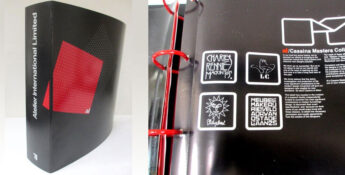AI
When I first started working at Whisler-Patri Architects in the early 1980s, AI stood for Atelier International. The company’s catalog, a black binder, held tear sheets for Cassina furniture and for authorized designs by the likes of Le Corbusier, Frank Lloyd Wright, and Rennie Mackintosh. For the designers at Whisler-Patri, it was their favorite source for furnishings (16-week shipping, of course). So the brand embedded itself in my mind in a positive way.

Atelier International catalog
Recently, a tech journalist I know posted a news release announcing that he was retiring because now AI can write his articles better than he can. The entire release had been written as a joke using AI. Then various people I know began populating their Facebook pages with painted “portraits” generated by AI. What an unfortunate confluence of 21st-century technologies.
This short interview from The Atlantic tries to see both sides.
We were in Tucson a week ago to see a friend of ours whose tongue and voice box were removed because of cancer. Before her surgery, she recorded her voice several times in what is called “voice banking.” Now we carry on conversations where she types a response and we hear her voice. There is a slight pause as we wait for her to type, but it’s just become a different rhythm. And there are a few emphatic stock responses like “What the xxxx” that were prerecorded. This is all possible because of AI. Sometimes the software can’t pronounce a word that she has written, and it stumbles, which is jarring because she would never mispronounce a word! I can forgive a lot of the criticisms we assign to AI in order to have an ongoing conversation with our dear friend.
Perhaps AI will help us when we descend into Alzheimer’s. For the time being, I am associating chatting with our pal with some of my favorite furniture designs. Given that she is an architect, I think she would like that too.
